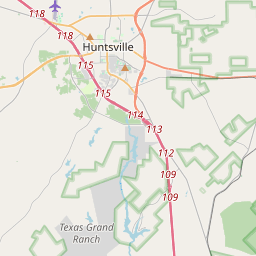Huntsville Item







English native George Robinson (1820-1888), formerly of the Galveston News, moved to Huntsville by 1846 and began printing the Huntsville Item on August 20, 1850. He was able to employ an apprentice printer that year. In 1859 Robinson and Dr. H. Morton, a dentist, built a two-story building. Dr. Morton's office was on the first floor, and the second floor housed the Item's printing operation and office. By 1860, Robinson employed a Canadian printer named R. H. Griffin. George Robinson served six months in the Texas state troops during the Civil War and then returned to Huntsville to continue publishing the Item. His work with the paper was again interrupted during an epidemic of yellow fever and the economic conditions of Reconstruction from 1867 to 1869. The newspaper office burned in 1878 and again in 1884. That year, George's youngest son, Fred Robinson, took over publication of the paper. He moved operations into a building on the town square and into another structure in 1885; that building burned in 1892. After another fire in 1902, Fred Robinson sold the paper to J. A. Palmer, who merged it with another Huntsville newspaper and renamed it the Huntsville Post-Item. The names, publishers and owners changed several times in the following years, but by 1914 it was the Item again, operated by Ross Woodall. His family continued to operate the paper after his death in 1943.
In 1967 the Woodall family sold the paper to Harte-Hanks Communications, Inc., which owned the Item until 1986. Later owned by several other companies, the Huntsville Item is one of the oldest newspapers in Texas. (2000)
As one of the most visible programs of the Texas Historical Commission (THC), historical markers commemorate diverse topics in Texas history, including: the history and architecture of houses, commercial and public buildings, religious congregations, and military sites; events that changed the course of local and state history; and individuals who have made lasting contributions to the state, community organizations, and businesses.
Texas has been a major oil-producing state for over a century. The first big oil discovery in Texas was the Spindletop field near Beaumont in 1901, which set off a massive oil boom that transformed the state's economy and made Texas one of the wealthiest states in the country.
In 1836, Walker County was officially established and named after Samuel Hamilton Walker, a Texas Ranger captain who died in the Mexican-American War. The county became a hub for trade and commerce, with the town of Huntsville serving as the county seat. The early residents engaged in farming, ranching, and timber industries, which became the backbone of the local economy.
During the Civil War, Walker County played a significant role as a major supplier of food and provisions to the Confederate army. However, the county also faced its share of hardships, including raids by Union troops and the devastation caused by the war. After the war, Walker County experienced a period of reconstruction and gradual recovery.
In the late 19th and early 20th centuries, Walker County saw significant progress and development. The expansion of railroads brought new opportunities for trade and transportation, and the discovery of oil in the early 1900s further boosted the local economy. In recent decades, Walker County has continued to grow and evolve, embracing modern industries while preserving its unique heritage and natural beauty. Today, the county is known for its thriving educational institutions, correctional facilities, and vibrant community.
Walker County Timeline
This timeline provides a glimpse into the major events and milestones that have shaped the history of Walker County, Texas.
- 1836: Walker County is established
- 1846: Huntsville becomes the county seat
- 1861: Walker County residents vote for secession from the Union
- 1870: The Houston and Great Northern Railroad reaches Huntsville
- 1900: The town of New Waverly is incorporated
- 1936: Sam Houston State Teachers College is established
- 1965: The Texas Department of Corrections is established in Huntsville
- 1970: San Jacinto Mall opens in Baytown
- 1999: The City of Huntsville celebrates its 150th anniversary
- 2007: The Texas Department of Criminal Justice moves its headquarters to Huntsville